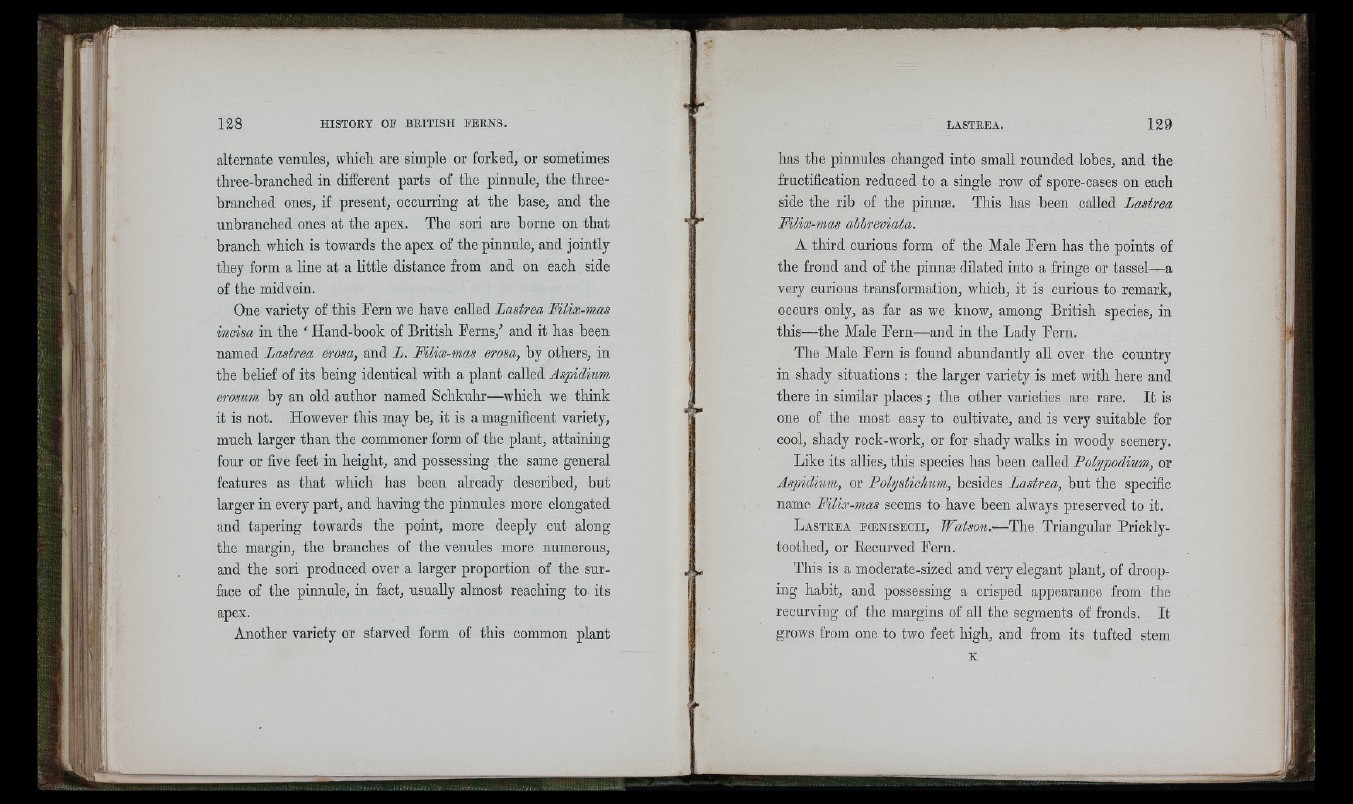
'îl
alternate venules, which are simple or forked, or sometimes
three-branched in different parts of the pinnule, the three-
hranched ones, if present, occurring at the base, and the
unbranched ones at the apex. The sori are borne on that
branch which is towards the apex of the pinnule, and jointly
they form a line at a little distance from and on each side
of the midvein.
One variety of this Fern we have called Lastrea Filix-mas
incisa in the ‘ Hand-book of British Ferns,’ and it has been
named Lastrea erosa, and L. Filix-mas erosa, by others, in
the belief of its being identical with a plant called Aspidium
erosum by an old author named Schkuhr—which we think
it is not. However this may be, it is a magnificent variety,
much larger than the commoner form of the plant, attaining
four or five feet in height, and possessing the same general
features as that which has been already described, but
larger in every part, and having the pinnules more elongated
and tapering towards the point, more deeply cut along
the margin, the branches of the venules more numerous,
and the sori produced over a larger proportion of the surface
of the pinnule, in fact, usually almost reaching to its
apex.
Another variety or starved form of this common plant
has the pinnules changed into small rounded lobes, and the
fructification reduced to a single row of spore-cases on each
side the rib of the pinnæ. This has been called Lastrea
Filix-mas abbreviata.
A third curious form of the Male Fern has the points of
the frond and of the pinnæ dilated into a fringe or tassel— a
very curious transformation, which, it is curious to remark,
occurs only, as far as we know, among British species, in
this—the Male Fern— and in the Lady Fern.
The Male Fern is found abundantly all over the country
in shady situations ; the larger variety is met with here and
there in similar places ; the other varieties are rare. It is
one of the most easy to cultivate, and is very suitable for
cool, shady rock-work, or for shady walks in woody scenery.
Like its allies, this species has been called Polypodium, or
Aspidium, or Polystichum, besides Lastrea, but the specific
name Filix-mas seems to have been always preserved to it.
L a st r ea poe n is e c i i , Watson.—The Triangular Prickly-
toothed, or Recurved Fern.
This is a moderate-sized and very elegant plant, of drooping
habit, and possessing a crisped appearance from the
recurving of the margins of aU the segments of fronds. It
grows from one to two feet high, and from its tufted stem
K